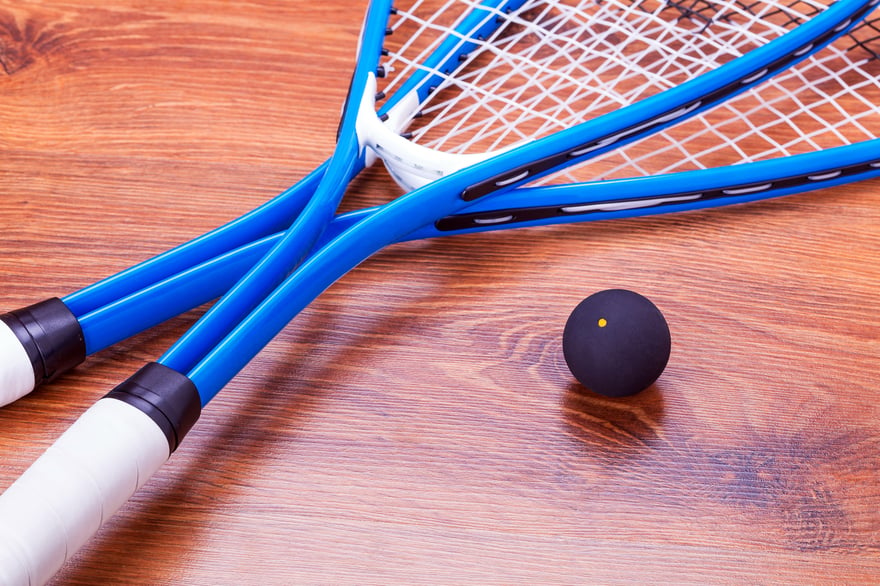Rules of Squash

Image credit: Shutterstock.com
Squash is a relatively simple sport to play, with minimal equipment required in order for a player to participate in the sport.
Racquet
Racquets are usually made of composite materials or metal with synthetic strings. Strict rules governing racquets were introduced in the mid-1980s, before which there were quite a variety of different racquets used during a game.
These racquets also have to be no more than 68.8 centimeters in length and 21.5 centimeters wide, weighing no more than 255 grams. Additionally, the area of the strings can only be 500 centimeter square or less.
Balls
Squash balls are specially constructed balls, by gluing two pieces of rubber over a hollow ball. These squash balls are also governed by strict rules. They have to be between 39.5 millimeters to 40.5 millimeters in diameter and weigh between 23 to 25 grams.
Squash balls come in a range featuring coloured dots, in order for players to differentiate between ball speeds and the amount of bounce it possesses. More experienced players tend to favour slow balls that bounce less for more of a challenge, while beginners opt for fast balls that bounce higher and are easier to sustain in rallies. Experienced players usually prefer squash balls with double yellow dots, which identifies balls that have the least bounce, while advanced players favour a singular yellow dot on the ball. Intermediate players go for white dotted balls, while recreational players commonly use squash balls with no dot or with a red dot. Lastly, novices commonly use balls with a blue dot on them, representing balls with the most bounce. Some squash ball manufacturers name the balls they produced according to the dots, in order to make it easier for players to choose. The double yellow dot ball, also known as the ‘Pro’ ball, is the competition standard ball.
Eye Protection
Compared to other sports, squash requires relatively little protective gear. However, many organising bodies strongly encourage players to wear polycarbonate goggles, in order to protect the players’ eyes in the event that the ball hits their face.
To receive the latest updates on the happenings in the Singapore sports scene, or to find out more about some of the latest programmes on offer at ActiveSG, like our Facebook page here.





![ActiveSG Academies and Clubs Logo (Solid Colour)[8647]](https://www.activesgcircle.gov.sg/hs-fs/hubfs/ActiveSG%20Circle%202023Theme/images/ActiveSG%20Academies%20and%20Clubs%20Logo%20(Solid%20Colour)%5B8647%5D.png?width=150&height=65&name=ActiveSG%20Academies%20and%20Clubs%20Logo%20(Solid%20Colour)%5B8647%5D.png)



-01.png?width=200&height=141&name=Team%20Singapore%20Logo%20(Red)-01.png)



